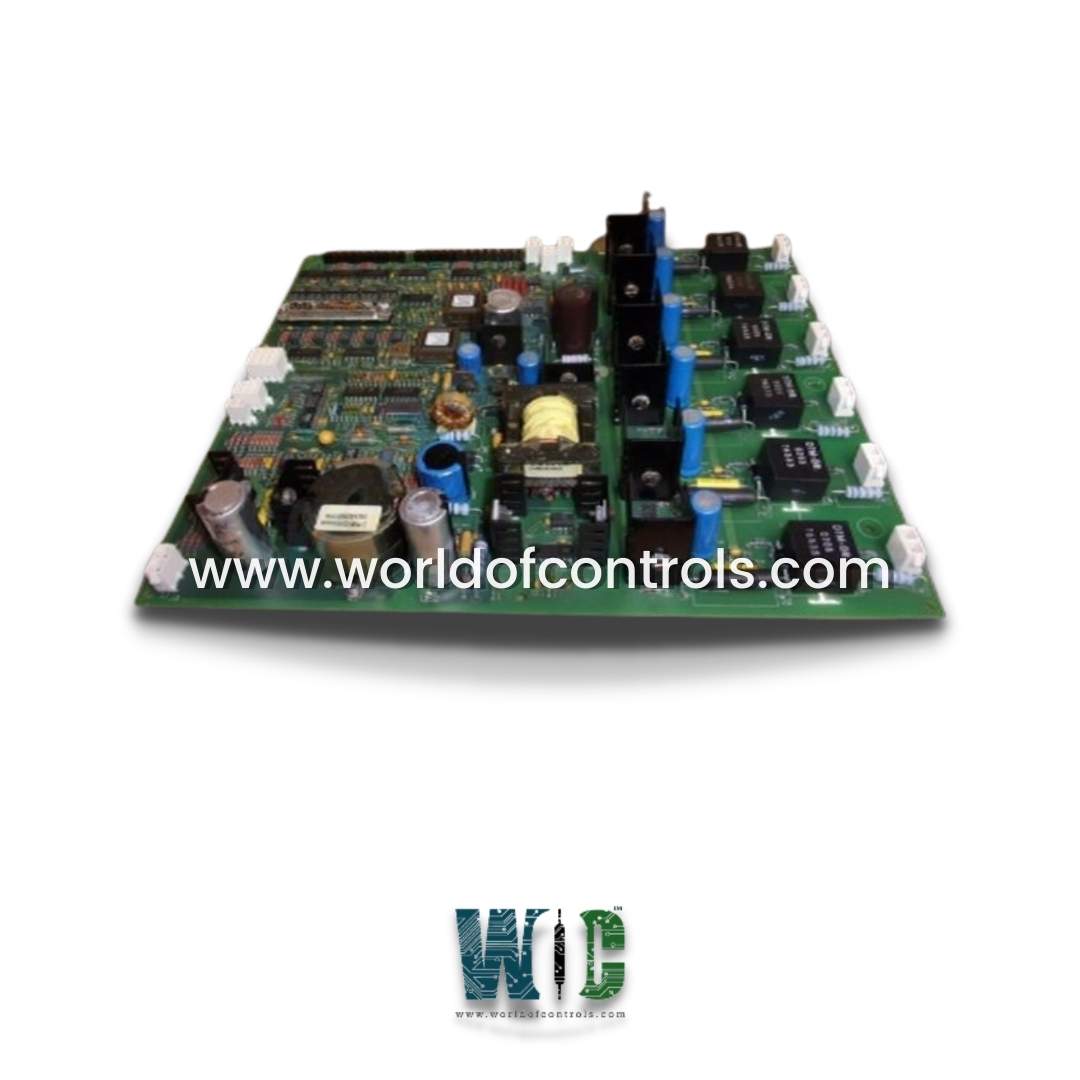SPECIFICATIONS
Part No.: IS200EGPAG1A
Manufacturer: General Electric
Country of Manufacture: United States of America (USA)
Trip solenoids 3 solenoids per TRPG
Solenoid rated voltage: 125 V dc
Solenoid rated current: 1 A
Product Type: Gate Pulse Amplifier Board
Availability: In Stock
Series: EX2100
Functional Description
IS200EGPAG1A is a Gate Pulse Amplifier Board developed by GE. It is a part of EX2100 control system. The Gate Pulse Amplifier Board (EGPA) plays a critical role in the EX2100 Excitation Control system, facilitating precise control and monitoring of the power bridge. It�receives gate commands from the ESEL (Excitation Selector) and translates them into precise control signals to manage the firing of up to six SCRs (Silicon Controlled Rectifiers) on the Power Bridge. This ensures accurate regulation of power flow within the system.
Features
- Current Conduction Feedback: Acting as an interface for current conduction feedback, the EGPA monitors and provides feedback on the current flow within the system. This feedback mechanism enables real-time adjustments and ensures optimal performance and stability.
- Bridge Airflow and Temperature Monitoring: Equipped with sensors to monitor bridge airflow and temperature. This monitoring capability allows for proactive management of thermal conditions within the system, helping to prevent overheating and ensure safe and reliable operation.
- Power Supply Management: A nominal 125 V dc power source from the EPDM (Excitation Power Distribution Module) supplies. An onboard dc/dc converter efficiently converts this power, providing the necessary voltage for SCR gating across the full range of input supply voltage. This ensures consistent and reliable operation under varying conditions.
- Visual Status Indicators: LEDs provide a visual indication of various system parameters and statuses. These indicators include the status of the EGPA power supply, input gate commands from ESEL, EGPA outputs to the SCRs, currents into the bridge, line filter status, cooling fan rotation, bridge temperature, as well as alarms or fault conditions. This visual feedback allows operators to quickly assess the status of the system and respond accordingly.
Conduction Current Sensing
- Conduction currents across all three phases of the bridge input are accurately sensed and fed back to the control system.
- Acts as an intermediary between Hall Effect sensors on the EXCS (Excitation Control System) boards and the control system.
- Hall Effect sensors detect current flow through each leg of the three-phase bridge input, with signals transmitted to the EGPA via connectors J9-J10.
- The EGPA conditions these signals before relaying the bridge status to the controller, ensuring precise monitoring and control.
Bridge Temperature Sensing
- Bridge temperature is monitored using an RTD (Resistance Temperature Detector) sensor input or temperature switch input.
- For new exciters, only the RTD input is utilized, with jumpers configured to disable the temperature switch inputs.
- In retrofit scenarios, where an EX2100 control system is added to existing bridges, temperature switch inputs are used alongside the RTD input to interface with existing temperature switches mounted on the bridge.
- Connectors J13 on the EGPA facilitate the connection of both RTD and temperature switch inputs, ensuring comprehensive temperature monitoring and control.
Airflow Sensor (Fan Rotation) Detection
- Airflow sensors, specifically fan rotation, play a crucial role in detecting loss of fan cooling within the bridge.
- Up to four fans can be connected to the EGPA via connector J12.
- The EGPA accepts either pulsed or dry-contact, normally open sensor inputs from the fans, with the mode of signal detection configurable through berg jumpers JP2-JP4.
- This flexibility allows for versatile fan monitoring and ensures timely detection of cooling system failures, preventing potential overheating and damage.
Line Filter Fuse Failure Sensing
- Line filter fuse failure is detected at connector J14 on the EGPA.
- This sensor input accommodates a single, normally closed, dry-contact input, providing a reliable means of monitoring the integrity of line filter fuses.
- Early detection of fuse failures helps prevent system malfunctions and ensures continuous operation of the excitation control system.
The WOC team is always available to help you with your EX2100 requirements. For more information, please contact WOC.
Frequently Asked Questions
What is IS200EGPAG1A?
It is a gate pulse amplifier board developed by GE under the EX2100 series.
How are conduction currents monitored in the bridge input?
Conduction currents across all three phases of the bridge input are monitored using Hall Effect sensors located on the EXCS boards. The EGPA acts as an interface between these sensors and the system control, ensuring accurate monitoring of current flow through each leg of the bridge input.
How is bridge temperature sensed in the EX2100 control system?
Bridge temperature is sensed using either an RTD sensor input or temperature switch input. For new exciters, only the RTD input is utilized, while in retrofit scenarios, temperature switch inputs are used alongside the RTD input to interface with existing temperature switches on the bridge.
What role do airflow sensors play in the system?
Airflow sensors, detecting fan rotation, identify loss of fan cooling in the bridge. Up to four fans can be connected to the EGPA, with signal detection mode configurable through berg jumpers JP2-JP4 for flexible sensor integration.
